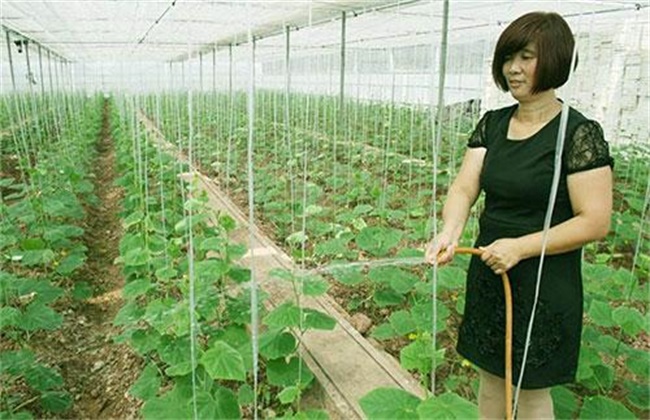The method of squatting seedlings of vegetables
Vegetable cultivation is distributed in all parts of our country. When planting vegetables, we should do a good job of squatting seedlings at the seedling stage. Squatting seedlings can enhance the growth ability of vegetable seedlings and lay a good foundation for the later growth of vegetables. However, many people do not know how to squat seedlings, so how to do vegetable squatting seedlings? Today, the editor has brought you the squatting method of vegetables. Let's take a look at it.

1. Fertilizer and water control at seedling stage
The most important thing for vegetable squatting seedlings is to control fertilizer and water in the seedling stage to ensure that the plant internodes can gradually tend to be thick, short, strong and well-developed roots. We must pay attention to reducing the amount of fertilizer and water, if there is too much fertilizer and water, it is very disadvantageous to the growth of vegetable roots. Controlling fertilizer and water can ensure that the roots of vegetables are effectively and deeply rooted, and at the same time, it can improve the stress resistance of seedlings. However, before you start squatting seedlings, water should be thoroughly watered to ensure that the roots of the seedlings can combine with the soil. Then do not water for a week after planting, but if the temperature is too high and the leaves droop due to lack of water, water should be properly watered to prevent the soil from drying and cracking.
2. Soil ploughing
Following the soil is also one of the main ways to make vegetables squat. Intertillage can cut off the capillaries in the soil, ensure the softness of the soil surface, and improve the storage capacity of the lower soil, which is very beneficial to the longitudinal elongation of the root system. And when ploughing, because some of the lateral roots will be removed. Thus reducing the absorption capacity and metabolism of nitrogen and increasing the accumulation of carbohydrates in crops is very beneficial to the growth of crops and can effectively reduce the phenomenon of overgrowth.
When ploughing, we should pay attention to control the times and time according to the planting crops, the growth of seedlings and the actual conditions of the soil. If dryland crops are planted, it should be carried out at the seedling stage and before closure, while crops such as rice should be carried out at the tillering stage. In general, crops need to be ploughed about three times in a season. However, if the growing period of the crop is long, the closing time is late, and the soil is not permeable, then the number of intertillage can be appropriate to ensure that the ground is weed-free and soft. Finally, the crop should be ploughed shallowly at the seedling stage and deepened appropriately in the middle stage to ensure the growth of the root, and it should be shallow before closing the row in the later stage.
3. The method and time of squatting seedlings
When we determine the squatting time and method of vegetable crops, it will vary from crop to crop. For example, if it is sorghum or corn and other crops sown in spring, then squatting seedlings are generally carried out from seedling setting to jointing stage, and the main method of squatting seedlings is to pick the soil and sun the roots. For some seedlings and transplanting vegetables, then it is necessary to control the amount of water in the seedbed and refine the seedlings in drought. Pseudo-planting can also be carried out to inhibit the growth of the aboveground part of crops and improve their resistance to changes in the external environment.
The above is a brief introduction to the method of squatting vegetables. That's all for today's introduction. This article is for reference only. Thank you for your reading and support.
Related
- Where is it suitable to grow horseradish in China? it is expected to see the middle altitude horseradish in Alishan.
- How to prevent tomato virus disease reasonably? (Control methods included)
- Many people like to plant towel gourd on the balcony. What are the main points of this method and management?
- What crops can chili peppers be mixed with?
- Fertilization techniques and matters needing attention in Tomato
- What are the grafting techniques for peach seedlings in spring?
- Harm and control methods of root swelling disease of Chinese cabbage
- What are the pests of sweet potatoes? How to prevent and cure it?
- Symptoms, causes and Control methods of navel Rot in Tomato
- The cause of "Cucumber rotten bibcock" in Farmers' planting Cucumber and its Control Plan



